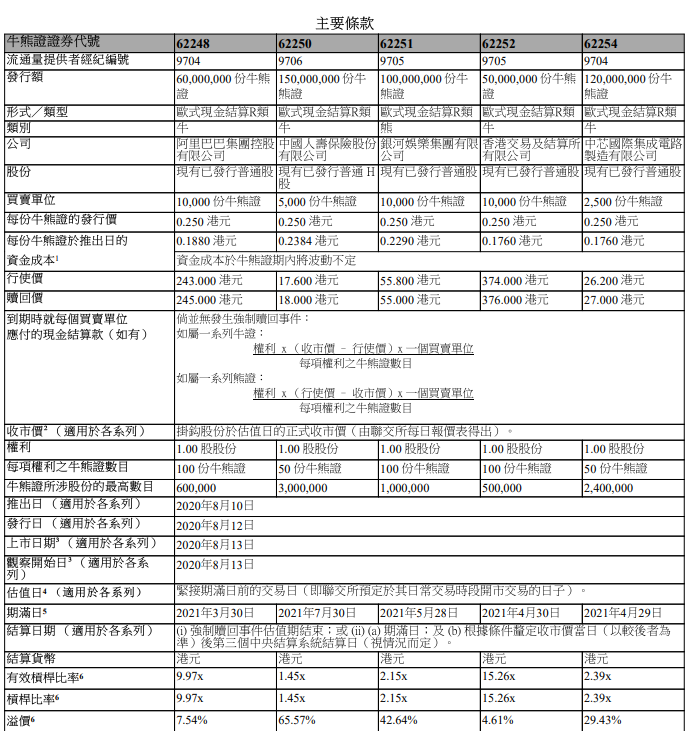Warrant
What is a Warrant
Warrants are named by the homophony of English warrants, namely covered warrants. Holding a warrant is actually equivalent to holding a virtual right. From this right, warrants can be divided into two categories,call warrants and put warrants. The reason why this right is said to be virtual, the key is that neither the call warrant nor the put warrant is finally settled in kind but in cash, and most warrant investors only regard it as an investment tool to to earn a spread, not really want to buy the right.
Warrants
Generally speaking, due to the different underlying assets, there are two different types of warrants, one is company warrants or stock warrants, and the other is derivative warrants or covered warrants. Warrants are covered warrants.
As we all know, stock warrants are generally issued by companies. They give holders the right to subscribe for the company's stock at the exercise price within a certain period or on a specified date, with the purpose of financing. After the holder pays the exercise price at that time, the issuer must deliver the corresponding assets. Covered warrants are actually an investment tool that is issued by investment banks. The purpose of issuance is not to raise funds but to provide investors with an effective tool for managing investment portfolios, and therefore does not require physical delivery. Just as stock warrants are linked to the issuer's stocks, covered warrants are also linked to certain assets, but this asset may be a stock, stock index, currency, commodity, or a basket of securities in the market. The investment bank that issued the covered warrant has nothing to do with it.
As for the warrants in the Hong Kong market, they are linked to a stock or stock index, and the maturity is mostly about six months, and they are basically European warrants.
Exchange listing
Warrants are all listed and traded on the Hong Kong Stock Exchange, and trading is carried out based on the number of complete "lots", and delivery is carried out two days after the trading day (T+2). In addition to a fixed code, there will also be a series of symbols with special meanings for specific instructions.
Taking "China Life SG one seven bull EC" as an example, "China Life" indicates that the underlying asset is China Life (2628.HK) stock; "SG" indicates that the warrant issuer is Societe Generale; "one seven" It indicates that the expiration date of the warrant is July 2021; "Bull " indicates a bull warrant; "E" indicates European warrant; "C" indicates a call warrant, and "P" is used for a put warrant. The meaning of the expression is "the bull warrant issued by Societe Generale, the European call certificate with China Life stock as the target, which expires in July 2021 and is settled in cash".
Warrant main terms
Each warrant will announce the relevant terms at the time of issuance. Taking the above-mentioned "China Life SG one seven bull EC" as an example, the warrant terms are shown in the table below.
The right mentioned in the table is "1.0", which means that 50 CBBCs can be exchanged for one share of China Life (virtual) at the strike price. In fact, in the Hong Kong market, the conversion ratio of most warrants is 10, which means that only 10 warrants correspond to one stock. In addition, the "number of shares per lot" refers to the minimum trading unit of the warrant. This number is often directly related to the minimum trading unit of the underlying stock and the conversion ratio. The issue price of "0.25 Hong Kong dollars" indicates that each warrant is 0.25 Hong Kong dollars, which is the result of actuarial calculations by the issuer Societe Generale through a series of models.